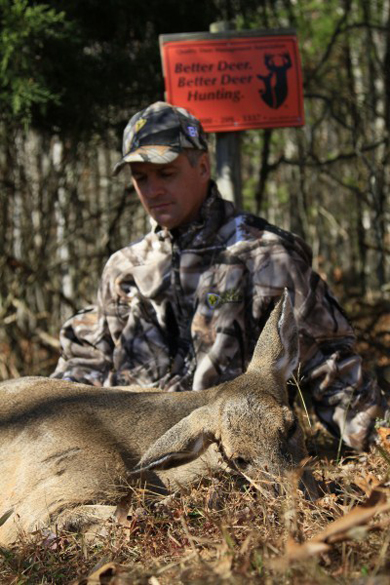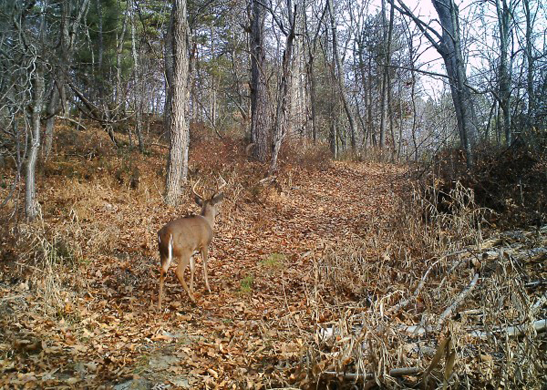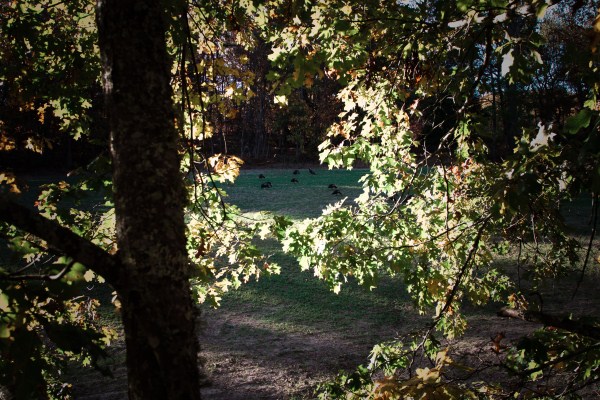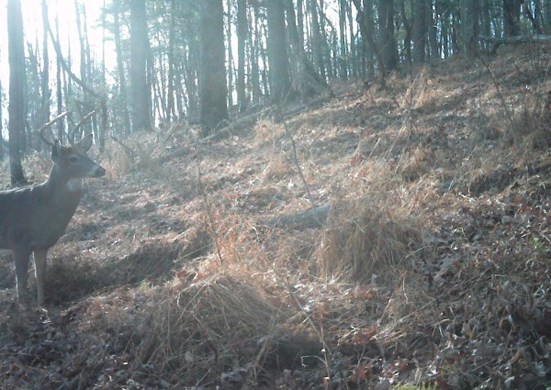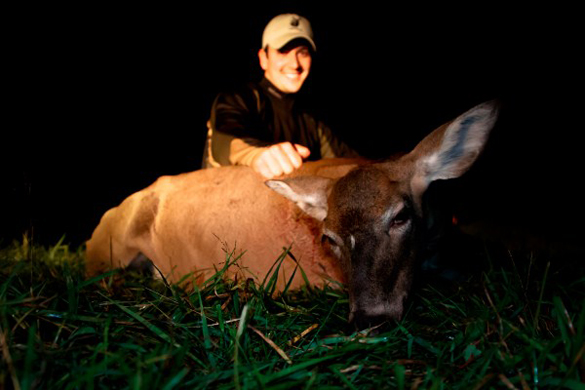LAST UPDATED: May 1st, 2015
If you’ve followed my blog posts here at Bowhunting.com with any regularity over the recent years then you know I’m a big advocate of Quality Deer Management (QDM) and the accompanying chess match required when hunting mature bucks. Like many hunters, deer season never really goes out for me, and that’s in large part thanks to modern technology and advancements in deer management practices. Between trail cameras, food plots, Timber Stand Improvement (TSI) projects, and off season scouting, I am provided with a wealth of tools and information that can help me better understand the deer I am hunting heading into each season.
Although much of the focus is directed toward harvesting mature bucks, taking mature does off of your property is just as important.
However, a common misconception among QDM practitioners is that once the hunting season arrives, the majority of the hard work is over. Sure, shooting does is a sound practice in any QDM plan, but other than that, it’s all about killing big bucks, right?! Not so fast, my friend! There’s plenty to be learned about your deer herd during the hunting season. In fact, observations from the stand play a huge role in gaining the best understanding possible of the current state of your deer management plan. In this blog, I will discuss how important in stand observations are to QDM, and what can only be learned from putting time in the woods.
Seeing What Trail Cameras Miss
Since their inception, I’ve always been very fickle about the use of trail cameras. At first, I was in love with them. I’d blindly put them anywhere I thought I could luck my way into a picture of shooter buck, without any regard to scent control, location, time of year, or preferred food sources. This ignorance quickly led to my frustration with trail cameras, because, well, I didn’t know how to use them. Now, however, I’ve gained a better understanding of how to best utilize my trail cameras to gather the best information possible during specific times of the year.
Trail cameras are a very useful tool (when used properly). However, they don’t always reveal evrything about your hunting location.
That being said, trail cameras don’t tell the whole story. They’re great for running inventory, but even still, they don’t capture a photo of every deer in the woods. They’re great for monitoring food plots and other major food sources, but what about the secondary food sources that deer, specifically mature bucks, browse on in their staging areas before entering the plot? Relying on trail cameras alone, you’d need nearly one for every tree in the woods to know exactly how many deer call your property home and what bucks are feeding in your food plot! That’s not only financially irresponsible, but would also be detrimental to your hunting success. That’s where in stand observations come into play. I’ll illustrate with a few examples from this hunting season.
Fawn Recruitment Rates
During the summer I run 6 trail cameras on mineral sites and food plots for inventory and pure enjoyment. Running trail cameras during the summer is just plain fun. By the time hunting season rolls around, I’ll have a good idea of how many does we have on our property and a couple of bucks to keep an eye out for during the fall. However, what summer trail camera inventory doesn’t reveal is our fawn recruitment rate (the number of surviving fawns per adult doe). Fawns are usually in hiding when their moms visit mineral sites and food plots, leaving me with no clue of how well the little ones are being recruited into the herd. By the time fawns are more active and following their mother’s every foot step, its hunting season, deer are dispersing, and the mineral sites are inactive. I’d have to bait during the hunting season (which is illegal in Virginia, and I wouldn’t bait even if it were) to develop enough data to calculate our fawn recruitment rate. That’s where in stand observations trump trail cameras.
In-stand observations can often times be the best method for gathering information about the deer on your property.
I was very methodical in my hunting strategy this past October. I only hunted 5 times the entire month, three afternoons on food plots, and two mornings close to doe bedding areas. In those 5 hunts I saw 43 deer (yes, many were likely the same), with 24 of those being fawns and 19 being adult does. This resulted in a fawn recruitment rate of 1.26 or 1.3, rivaling fawn recruitment rates in fertile Midwest states like Iowa and Illinois. With mild winters (by whitetail standards), no serious coyote or black bear problem, and above average habitat, I was always aware that we had high deer numbers, but I never dreamed we’d have such a high fawn recruitment rate. Obviously, this data isn’t conclusive, but it is far more reliable than what I would have learned from exclusively relying on trail cameras. Understanding that we have such a high fawn recruitment rate tells me we need to regularly target several adult does during the hunting season to help balance the herd, as well as supplement natural browse and increase available food sources through more, and bigger food plots. Again, information that would not have been learned just from running trail cameras.
Food Sources
Another example of how trail cameras fail in telling the whole story is identifying food sources. Food plots greatly influence the hunting success, or lack thereof, on our hunting property. Their role was evident last year when they were booming and we harvested three mature bucks. Their role was equally noticeable this year as they were burnt up, and then eaten down, and our mature buck sightings suffered. I usually keep at least one or two trail cameras on each of our 1+ acre food plots to monitor activity. This year, understandably, there was none. If I based my hunting strategy based on trail camera photos alone my time would have been better spent at home getting work done. However, in early November, when I had realized our food plots were pretty much useless, I noticed a trend in deer movement. Deer were still living on our property, much to my surprise, they were just feeding elsewhere.
When typical “food plot” availability suffers deer will find alternate food. The savvy bowhunter knows this and is ready to capitalize on the changing feeding patterns.
Our property has been logged aggressively in the past so there’s a network of old logging roads that weave their way through the property. It didn’t take long to realize that the deer were feeding on the browse available in the logging roads. The cool season grasses and forbs, gnarly grape vines, and suffocating honey suckle that line the logging roads made a reliable food source and my hunting strategies immediately changed. I moved my Lone Wolf stand a couple of times to hone in on their position and within a week my deer sightings went up and I had a mature buck at 23 yards thanks to my attention to detail. I elected to pass on this buck, named Maverick. I actually decided to name this buck Maverick because he was first spotted cruising one of the old logging roads, in an area I dubbed the Danger Zone (see Tom Cruise’s hit movie Top Gun, and the theme song, “Highway to the Danger Zone). Anyway, had I relied on my trail cameras to find the primary food sources I would have had to endure a very long and frustrating November. Instead, I learned that our property can still be hunted effectively when there isn’t a sustainable food source thanks to the available natural browse.
What Works? What Doesn’t?
Another benefit of in stand observations, other than actually hunting, is you get a front row view of your current QDM plan in progress. Simply put, you learn firsthand what is working and what is not. I’m sure I’m not the only deer hunter and manager out there who creates complex plans that I convince myself will help attract, grow, and hold more mature deer on my property. Sometimes they work, sometimes they don’t. Most times, however, it takes sitting in a stand and watching the plan manifest itself, or not, to decide if it’s something you want to continue implementing in your QDM plan. Again, I’ll provide an example.
As long as food plots have been around I hear hunters and land managers praise the late season attractiveness of turnips. Plant them in the summer for a dynamite late season hunting spot, they say. The deer won’t touch them until the first hard frost converts the starches to sugars, then the deer will hit them hard, they say. Well, it certainly sounded like a good idea, so why not give it a shot? My only problem was that I failed to take into consideration my area’s high deer density. Those poor turnips didn’t stand a chance. I can remember sitting in a pinch between two food plots last year and I watched from a distance as the food plot that had been over seeded with turnips got pounded three straight afternoons until barely a turnip leaf existed. The deer literally ate the turnips down to the dirt, thus rendering that food plot useless during the late season. Needless to say, until we can get our deer numbers in check, turnips won’t be a part of our food plot plan.
The author has seen first hand the fruits of his labor. Just remember, success isn’t always measured in antlers.
Conversely, however, there are times when management plans payoff and you can see firsthand the fruits of your labor. I’ve always believed that QDM, while extremely scientific and factual, isn’t overly complicated. It just takes some time, effort, and hard work. We’ve been practicing QDM on our property since the 2007 hunting season, and have seen the habitat and deer herd benefit tremendously. By regularly harvesting adult does we’ve seen the field dressed weight of those does increase by 12% (excluding this year’s harvest). We now experience a more intensified rut and it’s no longer a question of IF I’ll see a mature buck during the season, it’s when, how many, and how can I kill him? The increased number of rubs and scrapes that appear out of nowhere in late October is proof of an improved age structure, and we are now getting daylight pictures of mature bucks working scrapes during daytime hours.
Further, the benefits from our habitat management projects have been equally as impressive and enjoyable. As mentioned, the natural browse made available along logging roads provided enough of a food source to warrant a stand location, and is also enjoyed by turkeys and black bears as well. We’ve seen an increase in grouse and other wild birds thanks to the grain sorghum we plant, and the Egyptian Wheat that lines our food plots increases security cover encouraging mature deer to feed in the plots during the daylight. I could go on and on. The point is, though, there are few things more rewarding than sitting in a treestand and watching all of your hard work and effort through QDM manifest itself into not only a whitetail paradise, but an entire ecosystem that allows multiple plant and animal species to thrive.
Conclusion
Bowhunting for mature whitetails is a 365 day gig these days. There’s always something the initiated deer hunter and manager can be doing to learn more about the deer he is hunting, and the habitat in which those deer call home. However, at the end of the day, it’s hard to beat putting in stand time and learning about your deer herd the old fashioned way. Plus, what better way to do it than sitting high in a treestand on a frosty November morning?

